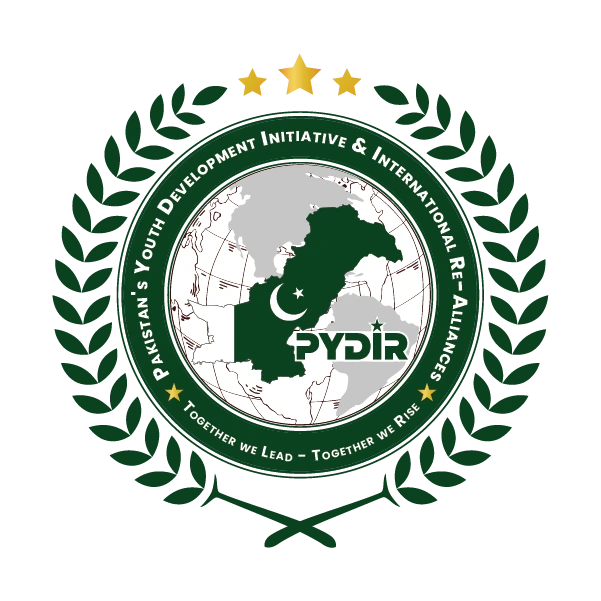When you analyze today’s world situation through a climate lens, you will realize that we are now going way beyond some of those disasters, and we also need to talk a lot more about desertification, the rise in temperature, and the fact that this region has seen unprecedented heat waves. The risk is only multiplying the impact of glacial retreat and melting loss of conventional biodiversity, ocean entifications, salinization of land, and forest degradation. These are the things that we really do not discuss as much as we need to, and another important aspect when we talk about climate impacts is not only to look at economic losses, where we normally deal with agriculture production losses or how business operations are affected or how infrastructure is lost, but also the so-called non-economic losses in terms of impact on health and human mobility, and that’s the core thing that we are discussing today, even the loss of societal and cultural identity, loss of language, loss of culture, ecosystem services, and so on. So just to understand the scale of impacts that we are now seeing when it comes to climate change impacting the entire world and particularly South Asia, if you look at the internal displacement report, this report is from the IDMC Internal Displacement Monitoring Center. More than 60 million people were displaced in 2022, and this report came last year. 53% of internal displacements are triggered by disasters, and the number is 32.6 million people. The important thing is to recognize that six out of 10 disaster displacements were triggered by floods. 98% of disaster displacements were triggered by weather-related hazards such as floods, storms, and drought. Another important thing to note is how disaster displacements have been increasing over the last few years. If you compare the average, the increase in disaster displacements in 2022 was more than 41%, so this is quite scary. Let’s look at South Asia a little more closely. There were 12.6 million displacements, and our region is affected by floods a lot more when it comes to displacement. 90% of regions disasters were triggered by floods, and of course we all know what happened in Pakistan in 2022, and impacts continue. One-quarter of global displacements were triggered by monsoon flooding in Pakistan, so that’s the scale. Imagine One disaster in one country can have a huge impact on displacement numbers overall, and of course, it is about people getting affected. If you look at conflict figures, countries like Afghanistan are affected by conflict, but disasters are particularly affecting displacement and climate-related disasters. If I talk about the overall findings, very clearly, climate change is a critical driver of displacement, as I mentioned in the IDMC report. The way we are continuing to burn fossil fuels, which is increasing the temperature and is going to affect displacement directly, also depends on social and economic factors. These increasing disasters are going to cause much more permanent migration as well, which is not usually the first adaptive response, so we are seeing more and more short- to medium-term migration, which is, you know, creating more large slumps that often also lack basic services. Let’s also understand that migration is good, but the kind of migration we are seeing, especially the kind of people who live in urban slums that lack basic services, is not the kind of migration that we are seeing as part of development. Women, children, elderly people, and people with disabilities are far more affected. Another aspect that we don’t talk enough about is people who are trapped. Some people would like to migrate because they have no options left; their coping mechanisms are failing, but they don’t even have as many resources as others. People who have more social and human capital migrate in a planned manner, so again, socio-economic factors play a huge role. In this kind of migration, there are also long-term issues emerging from extreme weather events that are forcing people to migrate. Let me also highlight the governance mechanism. In countries that have fewer resources and their governance systems are weak, that’s where people are going to get a lot more affected, specifically in South Asia. High population density levels, diverse geo-climatic zones, all kinds of impacts we are facing, and its exacerbating poverty. There’s the interplay of climate change and migration security. The human security issue has become really important, and we’ve also seen conflicts between the host communities and migrants. South Asian migration has been a pattern in the region, but the way it is increasing is because of push factors that also include conflict, poverty, and land access ethnicity that need to be recognized. And there are also pool factors: people migrating for better livelihoods. Or seasonal labor or access to health that also needs to be recognized, but at the policy level we still don’t look at climate migration as a major push factor that needs to happen, and that’s why it is largely still invisible when it comes to policies, which means that people are going through a lot more unsafe migration than a planned and supported migration where it is inevitable, and of course, women are far more impacted than other vulnerable groups and face many more challenges. Another aspect that we found from the studies is that there’s a need for a clear definition because, when we talk about mobility, you know it has several aspects: displacement migration, forced migration, and permanent relocation. So many of these concepts are still not being discussed, and that’s where policymakers must recognize how they are increasing and what the policy gaps are in terms of responses. Enhancing resilience is something that we have to be doing, which means making sure that people have enough support so that their right to stay is recognized, and then integrating development adaptation and disk reduction strategies. International mechanisms are happening, and there’s a task force for displacement, but that has to do a lot more work in terms of developing scenarios based on warming levels. The international mechanism, along with the task force for displacement, should also look at the legal protection and fulfillment of human rights, particularly for people who are forced to cross borders. Our policies are required to be climate-proof, but they still don’t look at the range of impacts. As I mentioned, we only look at conventional disasters and not as many slow-onset events, and there are many gaps related to implementation in terms of financial resources, climate attribution, scientific information, institutional weaknesses, and so on. And then there are countries like Bangladesh that have a lot more experience and can share it with other countries. Education is so important for girls and boys, as is the management of resources. And we know climate only exacerbates the situation, so better management of water resources helps in dealing with erratic weather patterns. We also need to strengthen basic services and facilities and provide more job opportunities and livelihood diversification. The regional recommendation is that there’s a lot more cooperation needed, and we need to have much more There are some regional cooperation initiatives that have seen some traction, such as the South Asia Cooperative Environment Program and integrated mountain development. We need to have a model of regional cooperation we have seen from Tajikistan, Uzbekistan, and Turkmenistan for water distribution, more data sharing and analysis, and the media can play a very important role in highlighting this issue across the region. Of course, this is a justice issue, and we would like the International Community to come forward and play their role as part of their obligation. Developing Solutions There are four steps to develop; that’s what’s needed. We can keep talking about it, but unless our governments take the lead by recognizing it, ensuring that there’s collaboration and cooperation, and then developing a plan, that plan has to be implemented.
The writer is a student of “BS International Relations” at the “International Islamic University Islamabad” and a member of PYDIR.



